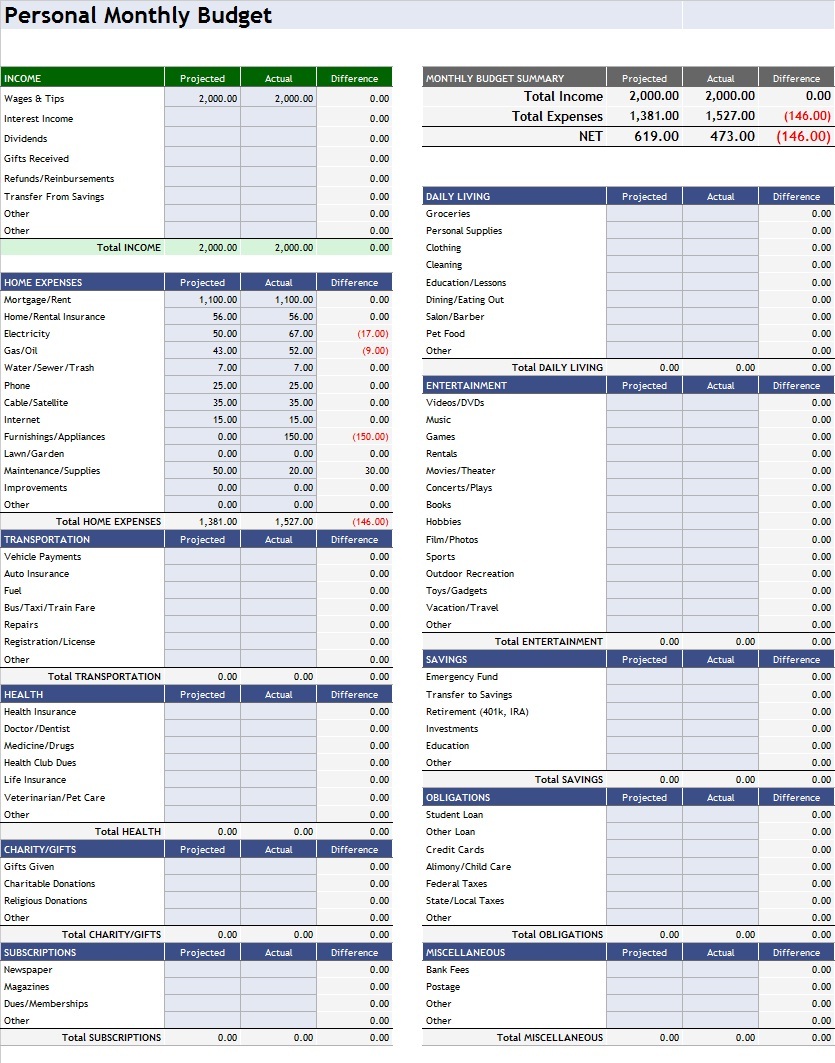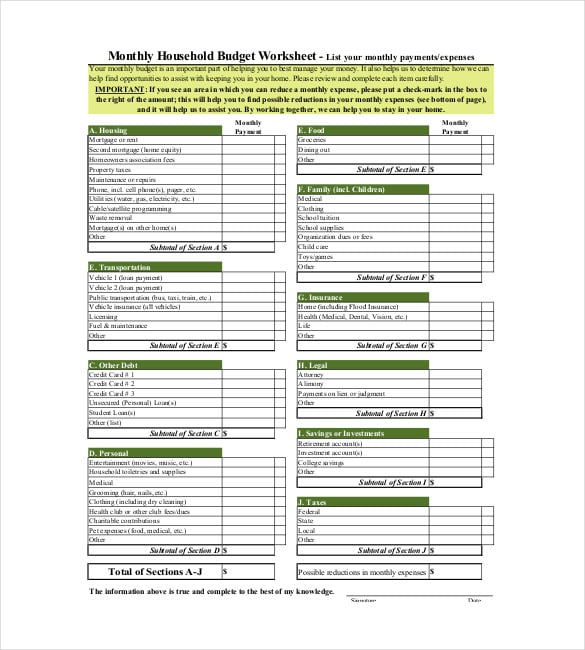
While we all need recreational activities, the fact that this expense is so high on the list may mean that those families relying on personal loans and credit cards may need to cut back on recreation. These include things like cinema tickets, books, newspapers and meals out and even include the cost of buying and keeping a pet. Surprisingly enough the third sector to eat up household spending is recreational activities and culture. Transport comes second now with costs for driving lessons, air fares and running a vehicle also included in the figures. Housing has taken over from transport as the biggest item of expense although the figures are based on rents, repairs and maintenance and do not include mortgage costs. Home Budget for HousingĪs always London has the highest spending per household, which is probably due to the higher cost of housing, and the North East area has the lowest average. There is also a marked difference between single parent families and big families and between older adults and younger adults. For exaple, England spend on their household more then any other UK nation. Families in some parts of the UK are spending more than others. However, this could also be because of rising food prices. In 2017, household spending returned to pre-financial crisis levels from 2003.

In fact, rail fares have again shot up in 2015. Prices for oil have now fallen, but costs for transport have not. There have been increases in fares for buses, trains and London Underground. The high cost of oil made a difference to spending on transport. Households in London and the South East spend more than families who live in other regions of the UK. There are also regional variations in the home budget for transport. Figures for 2013 show this annual bill as second only to housing and energy costs. There is no doubt that costs for transport to and from work have increased.

But, as fewer households now have cars this can also make the figures misleading. One survey shows that motoring costs have doubled in the last three decades. So figures for transportation costs are confusing. Low income families spend more on fuel for energy as well as housing and food. The figures actually show different spending patterns for different income groups. However, this applies mainly to higher income families. The figures show an average of 14% of income. The amount of money spent on transport takes up a high percentage of the average household spending for families in the UK. This is without compromising on quality and still having a healthy diet. Experts have estimated that it is perfectly possible for a family of four to spend as little as £40 per week on food and drink. But, with a too high proportion of fresh goods being thrown away there are some measures that families can take to prevent waste and make their money go further. The average weekly spend on food and drink is £91 for a family of four up 3% since 2017. What does the average family spend on food per week? Alcohol in the UK is priced higher than in EU countries but is still one of the products that people buy on a regular basis. Some families still put ethical products at the top of their list of priorities. Promotional products and sell buy dates are two other factors that influence spending on foodstuffs. 41% of those interviewed named price as the most important influence on their food spending habits. The price of food is the driving factor behind what people buy. This is despite the government’s program to get people to eat their five-a-day portions. In addition to this waste there has also been a fall in the consumption of fruit and vegetables. There is a surprising statistic that shows the average family loses around £470 per year just on food that is thrown away. In spite of the high costs for fresh foods, many families generate a huge amount of wasted food. Of course averages will always throw up anomalies so these figures will not apply to every family. Compared to Ireland, the UK food industry costs less. However, all other food consumerism is more expensive. Groceries prices in United Kingdom are 1.43% lower than in Germany. The average household spent 0.3 per cent more on food in 2016/17 than in 2014, when prices were at their highest during the last 10 years. The last figures available for the home budget for food were published in 2018. How Much of Our Household Budget is Spent on Food This could cause a reduction in the amount of households with money left over at the end of the month, increasing the need for cash advance loans. However, there is more borrowing going on now then there was following the financial crash. Some families are enjoying a small surge in spending power. Combining these facts with low inflation means means that wages in real terms have increased. These increases have been attributed to the more positive economic outlook.


 0 kommentar(er)
0 kommentar(er)
